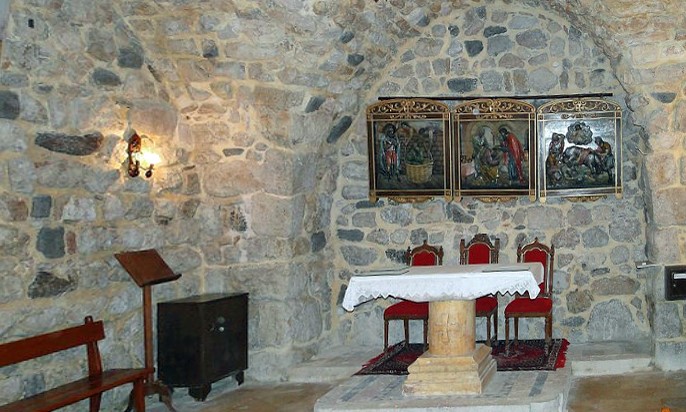
Just inside the ancient eastern gate of Damascus, Syria, are rooms said to have been the first century home of a person who participated in the conversion of the Apostle Paul.
According to the Christian New Testament, Paul (then named Saul) was persecuting Christians until he heard the voice of Jesus on the road to Damascus, causing him to fall to the ground and leaving him temporarily blind. His companions took him into Damascus, where Ananias, a Jewish follower of Jesus, baptized him in the Straight Street home of a man named Judas. With Paul’s belief in the resurrection of Jesus established and his sight restored, he spent the rest of his life spreading Christianity around the Roman Empire. Legends surrounded Ananias, one identifying him as the first bishop of Damascus and another saying that he was stoned to death outside the city. In the Middle Ages, two subterranean rooms along Straight Street were claimed to belong to the house where the sainted Ananias had lived at the time of Paul’s baptism. Christians and Muslims alike revered the rooms. In 1820, the Franciscans acquired the rooms and turned one of them into a chapel.
Today, the House of Ananias, along the Damascus street still named Straight, is open to the public. Renovated in 1973, one room features a marble sculpture showing Ananias baptizing Paul. The other room, still used as a chapel, includes three scenes from the Biblical account of Paul’s visit to Damascus. The scene on the right shows Paul falling from his horse after encountering Jesus, the one in the middle shows his baptism and the one on the left shows him being lowered in a basket from a Damascus wall to avoid persons trying to kill him. A nearby wall map shows the routes of Paul’s four missionary journeys.
Comments are closed.